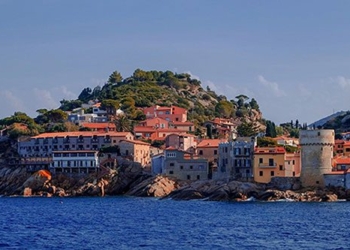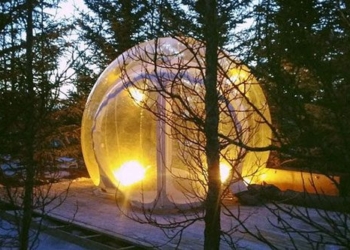In June, exactly 1,000 years ago, a remarkable architectural project began on a magnificent island off the coast of France, right in the flow of the Atlantic Ocean.
The Medieval Abbey of Mont Saint-Michel is an impressive structure that has played a significant role in the history of France for centuries. Today, it remains one of the country’s most popular tourist destinations—second only to the capital, Paris. On average, around 1.3 million tourists visit this site each year.
“Over the span of 1,000 years, the image of the abbey has become a symbol of France,” wrote French President Emmanuel Macron after his official visit to the site on June 5.
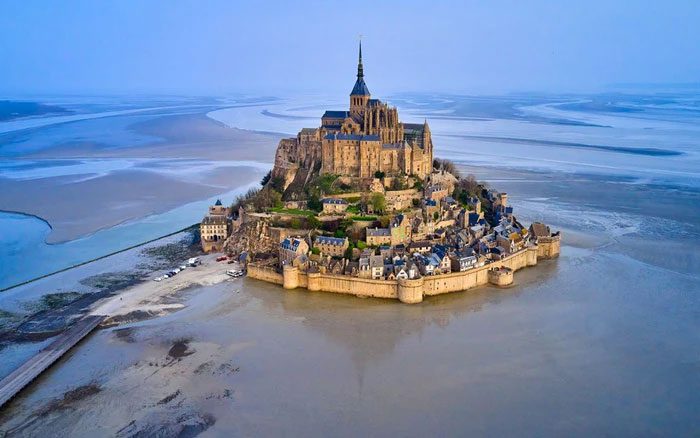
A panoramic view of the abbey in the heart of the sea.
Historical Significance
Rising from a bay surrounded by the regions of Normandy and Brittany, the Mont Saint-Michel Abbey showcases stunning Gothic architecture, standing tall amidst the village and thick fortress walls.
As a marvel of architecture set in a beautiful natural landscape, Mont Saint-Michel was designated a World Heritage Site by UNESCO in 1979.
The uniqueness of this castle lies in its surreal beauty, regardless of whether the tide is high or low. When the tide rises, the area appears to emerge like the mythical city of Atlantis, giving the impression that the entire castle is floating on the water.
The moment the tide recedes is equally fascinating. The retreating seawater reveals the surrounding sandy beach, allowing tourists to walk around and view Mont Saint-Michel from various angles. However, this experience is considered quite dangerous and requires visitors to be accompanied by a professional guide who understands the tidal cycles.
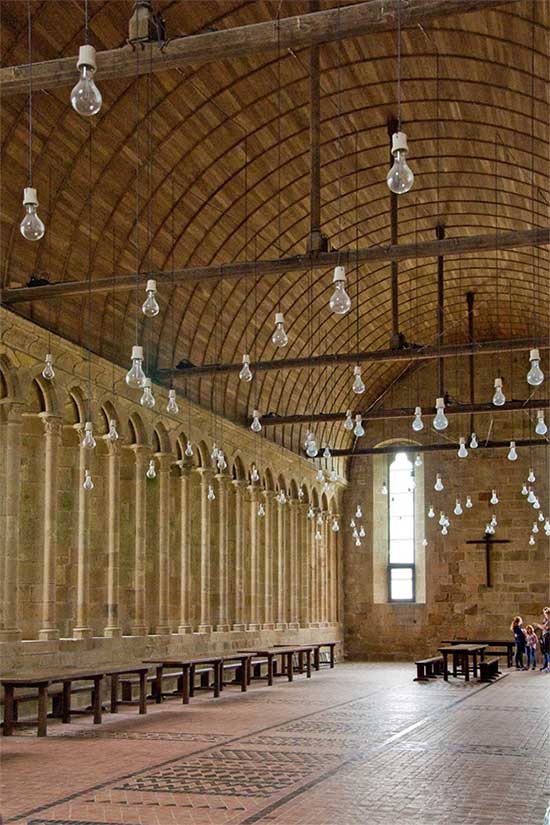
The ancient scenery inside the 1000-year-old abbey.
Before taking its current shape, Mont Saint Michel endured numerous historical ups and downs. Looking back to the 8th century, it was merely a small fortress in the sea. In 708, Bishop Aubert constructed an abbey on the island after experiencing a dream he had three times, dedicated to honoring Saint Michael the Archangel.
In 922, this first religious structure was destroyed by a fire. In 966, Richard I, the Duke of Normandy, commissioned the building of a Benedictine abbey on the island.
By 1023, the Mont Saint Michel Abbey was built in the structure we recognize today, based on three stone crypts and an older chapel. Over 1,000 years, the abbey has witnessed many significant moments throughout French history, such as serving as a fortress during the Hundred Years’ War. By the 18th century, Mont Saint-Michel became a prison during the French Revolution.
As it entered the Belle Époque—a period in Europe from the late 19th century to 1914—the abbey gradually transformed into a tourist attraction known worldwide as we recognize it today.
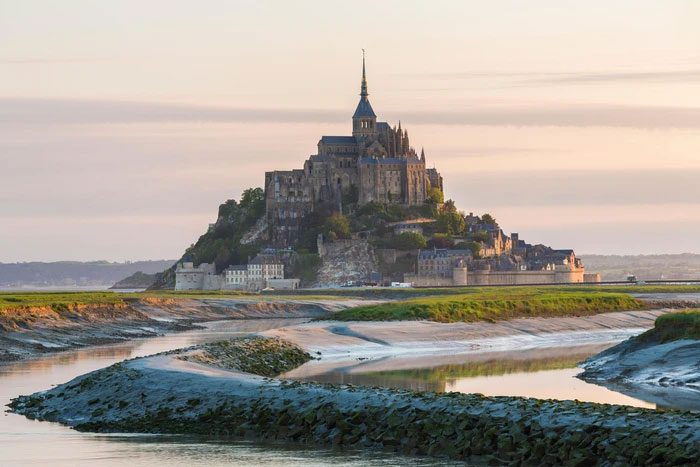
Regardless of the tide, this castle retains a unique beauty.
Concerns About Over-Tourism
Mont Saint-Michel has consistently maintained its popularity through various periods, attracting millions of tourists. Thomas Velter, the executive director managing the abbey, shared with CNN: “This was the largest pilgrimage site in the West centuries ago, even before Santiago de Compostela.”
Today, about 3 million people visit the abbey’s management website each year. At the end of May, the site was overwhelmed with tourists from 11 AM to 3 PM—a concerning figure typically only seen during peak summer seasons.
Initial figures for 2023 indicate that Mont Saint-Michel will remain a significant tourist attraction this year. However, overcrowding could pose problems for local residents, businesses, and the natural landscape in the area.
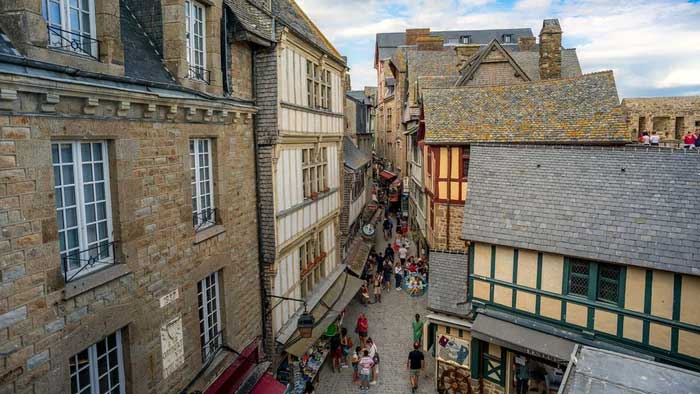
Overtourism raises concerns among management officials.
“I believe this situation will adversely affect shop owners, hotels, and restaurants simply because they cannot meet the demand if there are too many visitors. Mont Saint-Michel covers only about 1 square kilometer and has a single shopping street. No one will enjoy it if 5,000 people visit at the same time,” Velter stated.
In light of this situation, he encourages visitors to broaden their travel scope, such as joining boat tours around the bay during peak hours from 11 AM to 3 PM. This not only helps avoid over-crowding at the abbey but also provides tourists with a unique opportunity to explore this historic site differently.








































